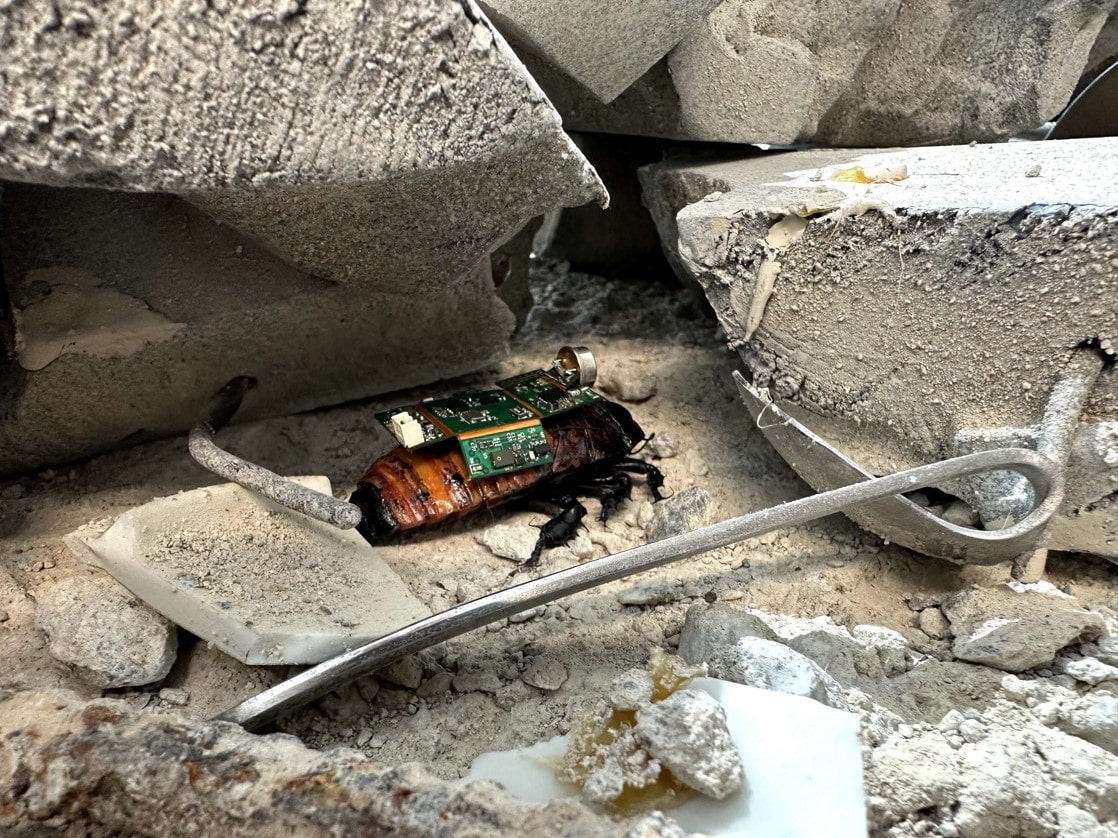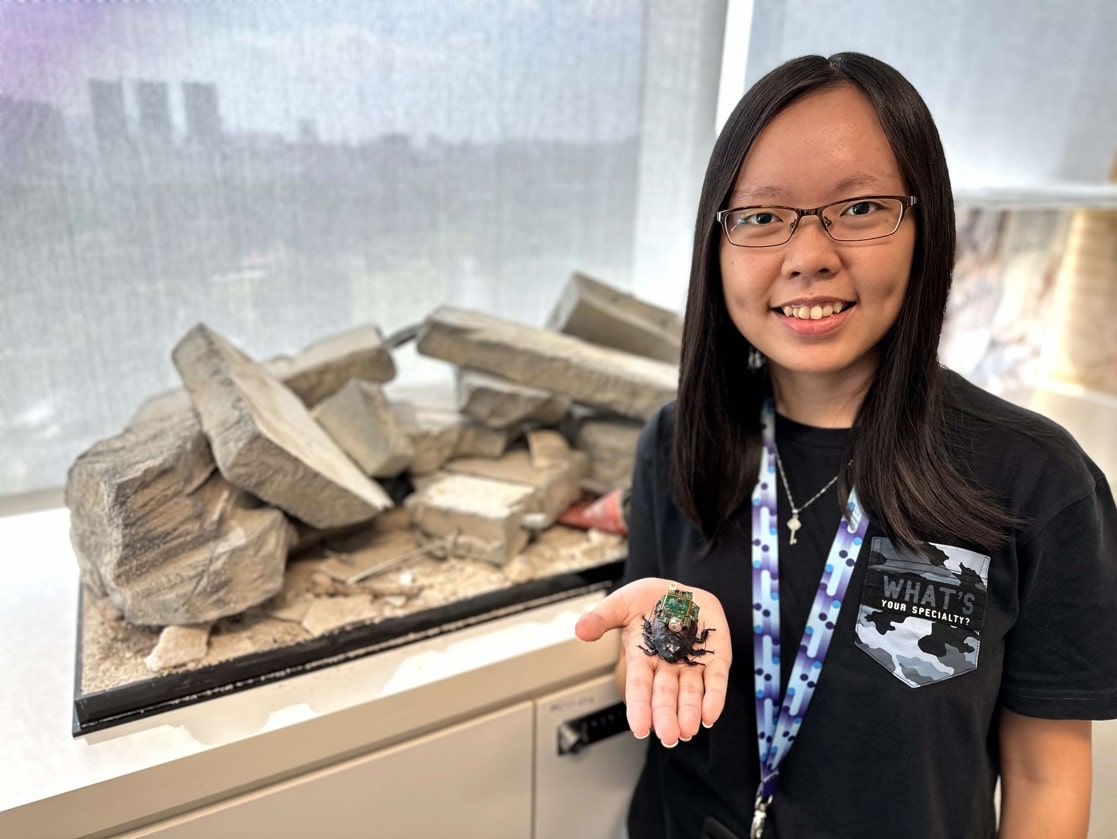The insect-hybrid robots are undergoing field trials in outdoor environments.

The insect-hybrid robot with its electronic backpack. These backpacks are still in R&D stage and have exposed electronics. Future upgrades will shrink these backpacks and make them more rugged and weatherproof. (Photo: HTX)
HTX’s insect-hybrid robots recently made their public debut at the Milipol Asia-Pacific – TechX Summit 2024 exhibition which was held from 3-5 April 2024 at the Marina Bay Sands convention centre.
When we last touched base with the insect-hybrid robot project back in December 2021, they were undergoing laboratory trials at Professor Hirotaka Sato’s laboratory at Nanyang Technological University. Since then, the enhanced insects have proceeded to field trials in outdoor environments, where they face the challenges of rain and humidity as well as rough terrain like concrete rubble.
The project team envisions the insect-hybrid robots being used in urban search-and-rescue missions. Not only can the dexterous cockroaches squeeze through rubble to search for survivors, they can also carry sensors to detect signs of life. But can’t this task be done by miniature robots? The tiny batteries currently used by miniature robots can only last for a few minutes, making them unsuitable for search-and-rescue missions which can last for days.
In contrast, a tiny battery will only be needed to power the insect-hybrid robot’s electronic backpack. The suite of devices that are embedded there – an infrared camera, a microphone, as well as environmental and navigation sensors – don’t consume as much power as a miniature robot since the locomotion for the insect-hybrid robot is provided by the cockroach!

RAUS CoE engineer Aw Rui Huan showing the small size of the insect-hybrid robot which allows them to crawl through rubble to search for survivors. (Photo: HTX)
Likewise, unlike miniature robots, cockroaches have the natural ability to crawl through small and tight spaces with great dexterity. By stimulating the cockroaches with electrical signals from their backpacks, the human controllers can encourage them to move in different directions. This way, search-and-rescue teams can use these cockroaches to systematically search the interior of a pile of rubble for survivors.
But how will the search-and-rescue team know if an insect-hybrid robot has found a survivor? This is where the infrared camera comes in. The camera comes equipped with a machine learning algorithm which can scan the thermal images to identify any survivors. The results can be transmitted to the search-and-rescue command centre in real time through a wireless communications device installed in the cockroach’s backpack.
The earlier laboratory tests proved the insect-hybrid robots to be capable of detecting humans as well as navigating areas autonomously and maximising their areas of coverage. The current ongoing field trials test their ability to do the same in the challenging weather and physical conditions that can be expected in real life disaster zones.
In a field test which was set in a pitch-dark tunnel, the insect-hybrid robots proved that they could be of great assistance to search-and-rescue teams in night conditions. Despite the absence of light, the cockroaches were able to navigate through the tunnel, and their infrared cameras were able to detect the heat from humans. The operators at the command centre were able to track the movements of the cockroaches in real time at their dashboards.
Aside from the field trials, Professor Sato and the project team from Robotics, Automation & Unmanned Systems (RAUS) Centre of Expertise (CoE) are hard at work enhancing their insect-hybrid robots. Apart from expanding their navigation capabilities and wireless communications stability, the team is also working to further miniaturise the cockroaches’ backpacks. The team is also identifying the best way to make it easier for frontline officers to set up the backpacks and deploy the insect-hybrid robots at disaster zones.

